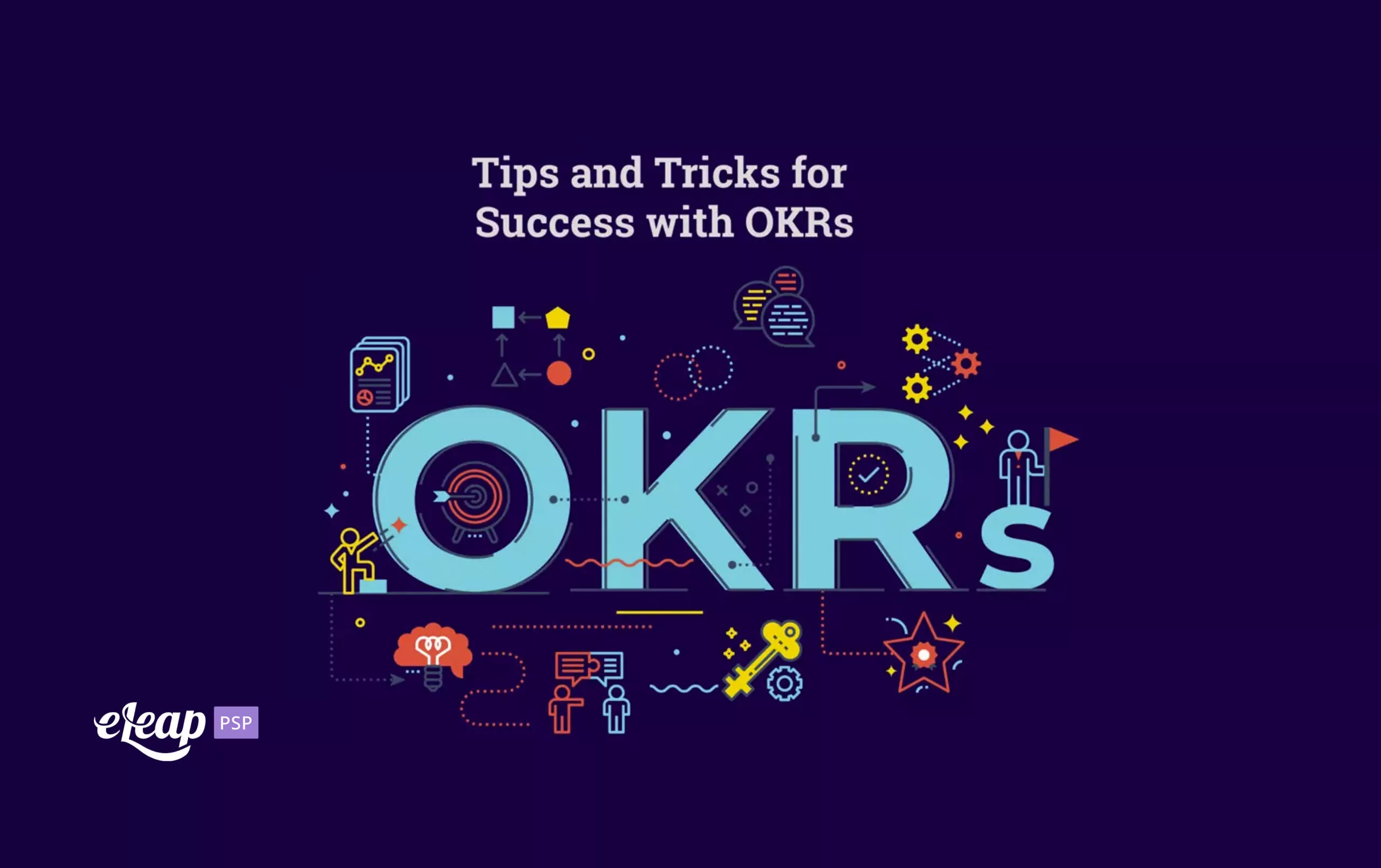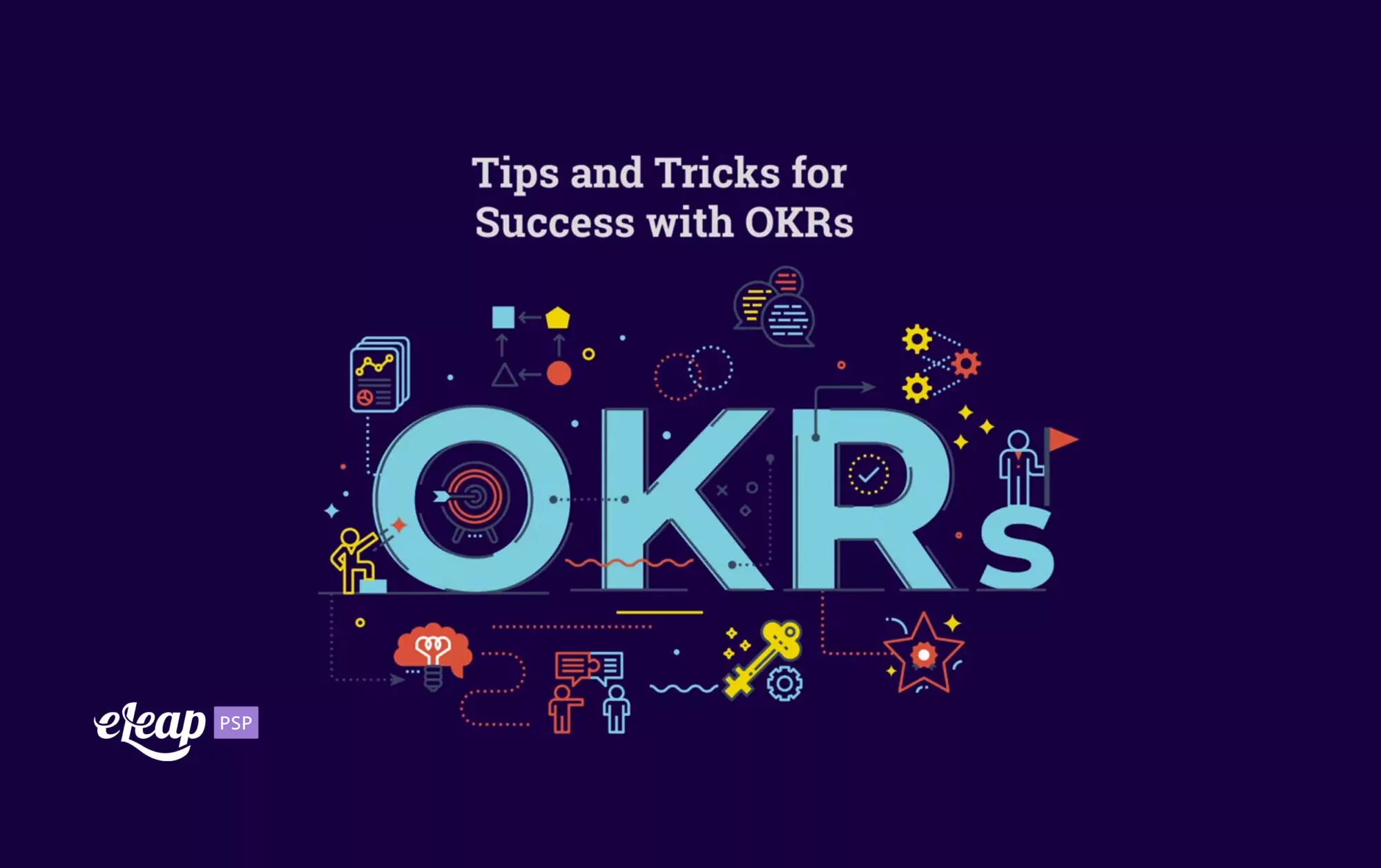Tips and Tricks for Success with OKRs

Objectives and key results (OKRs) provide the foundation for business success. Still, setting appropriate OKRs can be more than a little challenging. When done correctly, they can drive performance, support engagement, empower employees, and focus teams on outcomes.
However, when implemented incorrectly, organizations won’t see those benefits. It can cause damage to morale and engagement. In this post, we will share important tips and tricks to help make OKR implementation simpler and to ensure that decision-makers can develop effective OKR programs.

Start with Two Questions
OKR programs help guide an organization forward. However, they cannot do that without decision-makers knowing where they want to go. Before anything else, leaders must answer two questions:
- Where does the company need to go? This question will allow leaders to set larger goals for the business overall.
- How will the company get there? This question allows leaders to determine what steps are required to reach the overall objective (key results).
Know the Characteristics of Good OKRs
Knowing where the business is going and how it is going to get there is just the beginning. It is also important for decision-makers to know the characteristics of good OKRs. For those who have never delved into setting OKRs before, these may be a little bit surprising.
- They’re Ambitious – Goals should be ambitious. Achieving them should require team members to push beyond their comfort zones. Because of this, failure is always possible. If teams consistently achieve all goals, they are likely not ambitious enough.
- They’re Supported by Actionable Key Results – While goals might be ambitious, key results (the steps taken to reach objectives) must be actionable and understandable. Think of the objective as the destination and the key results as the map of how to get there. If the key results are not actionable, the team is unlikely to achieve the goal set for them.
- They’re Measurable – OKRs must be measurable. If they’re not, they do the organization no good at all. After all, it’s impossible to gauge success if you cannot measure progress toward it. Without the ability to measure, goals become meaningless.
- They’re Visible – Finally, OKRs are visible; they’re transparent. Each individual must be able to see everyone else’s progress, and be able to visually tie them to their own efforts. Transparency helps to ensure that everyone can see how their efforts support the entire organization.
Don’t Measure Output
One stumbling block for many people when it comes to implementing OKRs is achieving the new mindset necessary. Team leaders and executives accustomed to measuring output find this most challenging, because they must begin measuring outcomes, rather than output.
For instance, rather than monitoring the number of hours a particular employee works, it becomes more important to measure the outcome of their efforts. It’s also necessary to map those outcomes to the overall OKRs in place. This may require a deep shift for some, but doing so opens up a world of possibilities and helps leadership see the real value of what’s being achieved.
Another example might be “launch the new feature by 9/10”. This is output-related. It’s easily measured, but essentially meaningless. So what if the feature is launched by that date?
It’s more important to know what that feature should achieve. What will it enable? What results will it generate? This is an example of outcome-related thinking.
By shifting from output to outcome-thinking, leaders are better able to gauge real success. After all, if the feature launches by the date specified but fails to deliver the outcome expected, timeliness becomes irrelevant.
Don’t Overload Your Teams
It’s tempting to go big when setting OKRs. After all, they’re supposed to be ambitious, right? Leaders and decision-makers should take a step back from that line of thinking, though.
Instead of going for broke, set three to five OKRs that matter most. Anything more than this will cause your teams to stumble and eventually fall. It’s setting them up for failure while expecting success.
Conversely, it is also important not to see too few OKRs. One or two may not be enough to achieve meaningful results. It may also not foster progress toward mission-critical organizational goals.
Bake In Cross-Department Support
OKRs are designed to support the entire organization. Each team must take mission-critical objectives and break out key results and objectives that lie within their sphere of influence that lead forward toward the primary goal. However, it is also important to realize that many of these efforts will have at least some cross-department or cross-team dependencies.
It is important that decision-makers draft OKRs and then allow time for other leaders to review and analyze them. This will allow them to identify any dependencies and account for how those will be handled, supporting success for everyone. For instance, if sales needs a new software tool for reaching warm leads, IT must have the time to develop and test the tool before sales can begin reaching out to those leads.
Sales and marketing alignment is another good example here, but there are numerous others. Remember that no department is an island unto itself – a business is a single, cohesive whole and all departments affect each other. OKRs must be developed with this in mind.
Set Clear Expectations
Remember – OKRs are ambitious. They’re not designed for 100% success. Think of them as stretch goals.
This must be communicated to team members clearly. Many organizations find it helpful to set color-coded or percentage-related targets here. For instance, green might indicate that 100% of OKR key results were achieved (rare), while yellow might show that 69 or 70% were achieved. Red might highlight that less than 69% of OKR key results were achieved.
Because these are ambitious stretch goals, anything that falls into the yellow category should be considered “good”. Consistently landing within the green zone indicates that goals aren’t ambitious enough, and red means that the goals are too ambitious.
Get Set for Growth
With the tips above, leaders should be better prepared for setting OKRs and tracking progress. Be ambitious but flexible, and you will achieve growth and success.